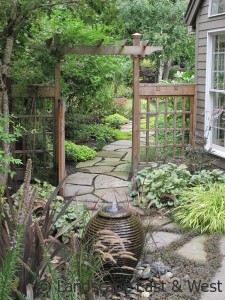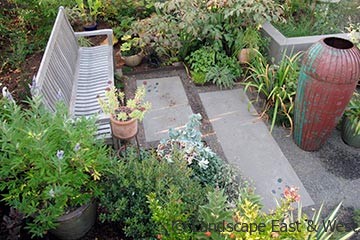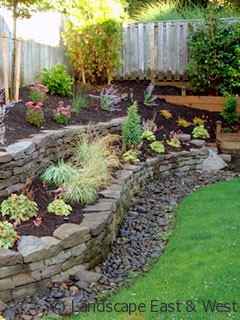7 Tips for Winterizing Your Portland Landscaping
 Proper landscaping maintenance requires gardeners to complete different tasks in different seasons. Planting is usually done in the spring, weeding and watering in the summer, and harvesting in the fall.
Proper landscaping maintenance requires gardeners to complete different tasks in different seasons. Planting is usually done in the spring, weeding and watering in the summer, and harvesting in the fall.
Autumn is also the time to winterize your landscaping. Portland, Oregon and other Pacific Northwest locations rarely see extremely harsh, cold winters, but there are still certain tasks Portland landscaping maintenance experts recommend for this time of year.
Prepare your Lawn for Winter
Landscaping maintenance pros recommend applying fertilizer in the fall. Indeed, winter fertilization with Northwest grass varieties is one of the most important of the year. The roots will absorb and store the nutrients from the fertilizer so that they will be available in the spring for a good healthy push. October through mid-November is the best window before the freezing weather. Once the ground is frozen, you will not want to fertilize until spring. Make sure to utilize a fertilizer that has a lower nitrogen content and a higher potassium content than what you utilize during the summer months.
You will want to keep your lawn mowed to about 1.5 inches throughout the fall and winter months. (Here in Portland, landscaping maintenance often involves waiting for your lawn to dry out so you can actually cut it.) The lower height of the lawn will allow moisture to escape and avoid many of the common lawn diseases associated with excessive moisture.
Finally, rake leaves and other debris from your lawn to prevent mold from settling in during the wet Portland winter and causing damage to your lawn.
Care for Plants that Never Go Dormant
 Azaleas, hollies and other popular Northwest plants stay green throughout the winter; they keep photosynthesizing sunlight into energy throughout the year. For this type of plant, continue basic landscaping maintenance such as trimming back branches that are growing across each other and ensuring that each specimen is getting enough water (not that that’s a common problem when landscaping Portland, Oregon yards). If you see insect infestations on plants that grow year-round, try spraying them with horticultural oil rather than using toxic pesticides. If you are unsure as to the cause of the disease or infestation, contact your local garden center or landscape contractor to assist in identifying the appropriate product to use.
Azaleas, hollies and other popular Northwest plants stay green throughout the winter; they keep photosynthesizing sunlight into energy throughout the year. For this type of plant, continue basic landscaping maintenance such as trimming back branches that are growing across each other and ensuring that each specimen is getting enough water (not that that’s a common problem when landscaping Portland, Oregon yards). If you see insect infestations on plants that grow year-round, try spraying them with horticultural oil rather than using toxic pesticides. If you are unsure as to the cause of the disease or infestation, contact your local garden center or landscape contractor to assist in identifying the appropriate product to use.
Test and Amend Soil
Fall is a good time to assess whether your soil needs amendment. You can take your soil sample to a nearby university or nursery to have it tested. When it comes to landscaping, Portland, Oregon soils are often riddled with clay, which limits drainage and can drown some species. Once you have your soil test results in hand, you will better understand how to add compost or other natural solutions to improve soil quality.
Deadhead Old Blooms
We are lucky to have such gorgeous plants as hydrangeas as part of our Portland landscaping. Maintenance for these and other flowering plants involves deadheading flowers once they’re done blooming. Avoid over-pruning flowering plants and shrubs; in many cases, all you need to do is remove the remnants of flowers. There are many on-line resources available to assist you in proper care of your plants.
Gentle Pruning
 Portland landscaping maintenance professionals wince when they see victims of over-pruning. Too often, homeowners and landscaping workers simply shear plants with electrical clippers, with no thought to how this extreme pruning will affect the flow of nutrients and energy to the plant.
Portland landscaping maintenance professionals wince when they see victims of over-pruning. Too often, homeowners and landscaping workers simply shear plants with electrical clippers, with no thought to how this extreme pruning will affect the flow of nutrients and energy to the plant.
Avoid hacking away willy-nilly. Wait until herbaceous perennials turn brown. Then, prune gently to remove any crossed branches and open up space at the heart of the plant. Some plants have special pruning rules, so it makes sense to consult with a Portland landscaping maintenance expert when you’re not sure how to prune a certain species. Excessive shearing of plants in the fall can remove the flower buds that are getting ready to bloom in the spring.
Mulch
 Once you’ve cleaned your beds, deadheaded and pruned, it’s time to mulch. Basically, mulch is a layer of organic material that protects the bare soil between plants. You can think of mulch as a layer of insulation for the soil – it evens out soil temperatures during the winter. Additionally, it minimizes weed growth and makes it easier to pull weeds when they do appear. Finally, mulch adds a layer of nutrient-rich humus, making the top layer of soil airy and light.
Once you’ve cleaned your beds, deadheaded and pruned, it’s time to mulch. Basically, mulch is a layer of organic material that protects the bare soil between plants. You can think of mulch as a layer of insulation for the soil – it evens out soil temperatures during the winter. Additionally, it minimizes weed growth and makes it easier to pull weeds when they do appear. Finally, mulch adds a layer of nutrient-rich humus, making the top layer of soil airy and light.
When landscaping Portland, Oregon yards, it’s smart for homeowners to save dry leaves, grass clippings and other natural detritus to serve as mulch. Alternatively, you can purchase mulch from a landscaping maintenance company.
Winterize Irrigation Systems
Beyond preparing flora for winter, you’ll also need to prepare your irrigation system for colder temperatures. When temperatures drop below freezing, any water left in a sprinkler or irrigation system will expand. This can cause major damage and should be avoided at all costs. Indeed, the cost of repairing harm to irrigation systems is often quite high! It is much more affordable to call in a Portland landscaping maintenance crew to “blow out” your irrigation system, thereby removing all lingering water.
These winterization techniques will prepare your yard for an explosion of new growth and beautiful blossoms once spring rolls around.
 Contributing author Eric Johansson specializes in lawn care maintenance at Landscape East & West, Portland landscaping and design professionals. From irrigation assessment to leaf cleanup, our team has your lawn’s best health in mind. Learn more about our lawn care services at LandscapeEast.com
Contributing author Eric Johansson specializes in lawn care maintenance at Landscape East & West, Portland landscaping and design professionals. From irrigation assessment to leaf cleanup, our team has your lawn’s best health in mind. Learn more about our lawn care services at LandscapeEast.com
